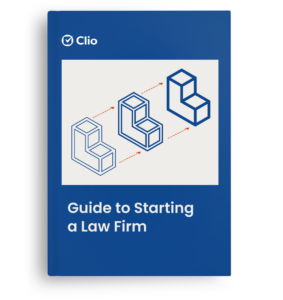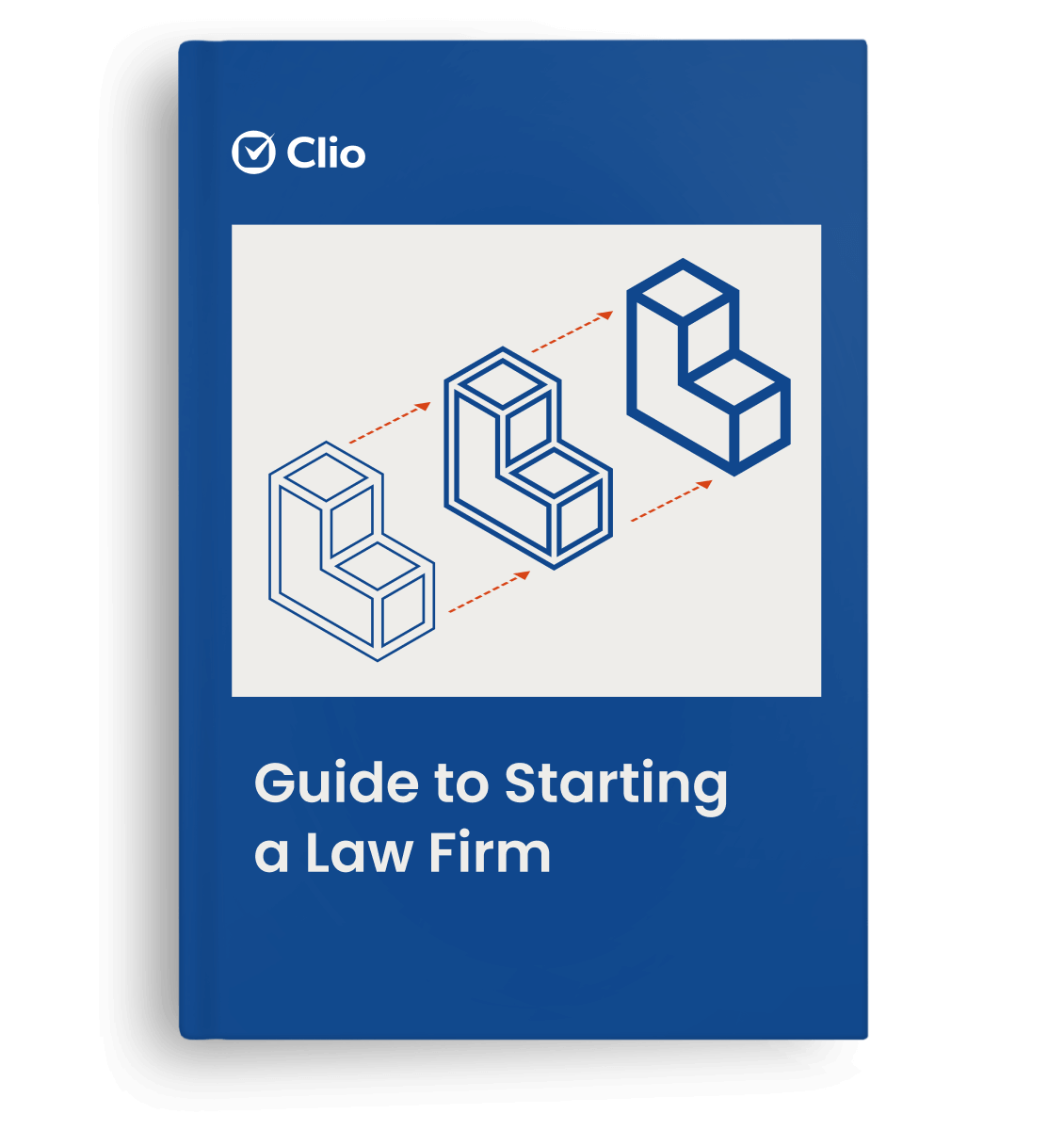When you order food at a restaurant, you don’t expect to know exactly what ingredients and techniques go into making your meal—but you do expect to know about how much it will cost.
It might seem obvious when it comes to food service, but this upfront pricing model is not the norm in the legal industry. For most legal services, the billable hour is still prevalent. While billable hours might be the norm, they can also mean ambiguity, confusion and pricing risk for clients when it comes to estimating the cost of legal services.
To explore the issue of pricing risk for law firms, we spoke with Ed Walters, CEO of Fastcase, at the 2019 Clio Cloud Conference. As Ed explains, the billable hour puts the weight of pricing risk on clients’ shoulders. By shifting how we frame law firm pricing—favoring more transparent fee structures and better communication about pricing—law firms can create smoother legal services engagements that benefit their business, and their clients.
What is pricing risk?
Pricing risk is the risk for a provider of setting a price without knowing exactly how much it will cost to provide a service. For a client, pricing risk is the risk of agreeing to pay for a service without knowing the final cost. Ideally, risk should be balanced according to who has the most information. But with law firms, this isn’t the case.
Picture this: A client is in need of legal services. They approach their lawyer, asking, “How much will this legal service cost me?”
“It’s a $X-hourly rate, times as many hours as it takes to get it done,” the lawyer says, citing their billable-hour fee structure.
While the answer is certainly honest, it doesn’t provide the real information the client needs, because the client doesn’t know if the work will take one hour or a hundred hours. So, the client can’t estimate how much those legal services will cost, making it nearly impossible (and stressful) to budget accordingly. If the client engages the lawyer’s legal service, they’re taking on the pricing risk—because they can’t truly know how much or little the bill will be at the end.
To Ed, who was previously a lawyer himself, the ambiguity of a billable-hour structure puts the responsibility for pricing risk in the wrong hands.
When Fastcase engages the services of a lawyer, for example, Ed wants to know at the outset how much it will cost. “The law firm who is representing me has resolved this issue for clients over and over again,” Ed says. “…And so, you would think that they would have the most information about what that’s going to look like, how long it’s going to take, how much it’s going to cost. Certainly I, as a client, don’t.”
Asking clients to shoulder the risk might seem easier for law firms at first. But not knowing what services might cost at the beginning of an engagement does clients a disservice, and can cause a lot of undue stress—leading to a poor client experience.
For law firms that strive to offer client-centered service, unbalanced law firm pricing risk can be the factor that makes clients turn to another firm. Clients might even avoid getting the legal services they need altogether.
The problem with billing by the hour and asking clients to shoulder pricing risk

Billing by the hour can make the cost of legal services unnecessarily ambiguous. If clients are unsure because they can’t get a clear understanding of what their legal bill will be, they’re more likely to avoid or put off hiring legal services when they encounter legal problems. The result? Potential clients don’t get the help that they need, and law firms lose out on business.
“The more information that law firms can give to clients about what engagements are going to cost, the more transparent they are, the more frictionless those legal services engagements are, the better the client experience is going to be,” Ed says. “The more clients they’re going to win, the better word of mouth there’s going to be. This really gets that flywheel in motion. So the more information people can give, the more money they’re going to make.”
Market prices, lobster and legal services
To illustrate the problem, Ed offers an apt culinary comparison. The mindset of the billable hour in legal services is similar to what would happen if you went to a restaurant, asked for the “Market Price” of lobster, and received this response:
“‘It depends on the temperature of the water that the lobster was pulled out of. And it depends on the route that the truck took from the lobster pound to our restaurant. It depends on the spot price of natural gas tonight, when we cook the lobster. It depends on who in the kitchen prepares it. You know, if the master chef prepares it for you, it’s going to be very, very expensive. But if you want to save a little money, we got this guy who’s washing dishes for us. He’s kind of an apprentice. He could prepare it for you, and you could save some money on it. But don’t worry, the price of your lobster will be on the final bill.’”
Clearly, if that was how market prices worked at restaurants, no one would ever order lobster.
“All of the risk is on the person who orders it. And—whatever the bill comes out as—they are obliged to pay it, because they’ve already eaten the lobster,” Ed says. If a restaurant used this pricing model, people would choose another restaurant. “… And if all restaurants charge market prices in this way, people would rather eat at home. They would cook for themselves, or they would go hungry.”
Ed argues that this is the issue with the legal service market when it comes to law firm pricing risk.
“… this is the legal services market. All of our restaurants say the food is at market price. The price you won’t see until the final bill, but you’ll be 100% obliged to pay whatever that price is when you get the bill. So it’s no wonder that 80% of people with legal problems don’t address those legal problems through the legal services market. They’re eating at home.”
More information, more success
Ed doesn’t advocate for alternative or fixed fee agreements as the end-all be-all. But he does believe in more transparency and communication to reduce the risk for clients when it comes to fees.
Giving clients more information about what services will actually cost empowers them to make more informed decisions. By reducing pricing risk, lawyers can make it easier for clients to be confident that they can afford legal services.
“With legal services, there are plenty of people who would go consult a lawyer if they knew that they could afford the legal services. And they don’t because of risk,” Ed says.
Pricing and access to justice

Ed also explains how—by reducing law firm pricing risk for clients—law firms can leverage their pricing models to shrink the access to justice gap for more people.
“We talk about this access to justice gap—the gap between people who need legal services, and those who get them from lawyers—as if it’s some exogenous problem,” Ed says.
“Lawyers say ‘Legal services are expensive, and it really is too bad that more people can’t afford them.’ You know, poverty is awful, as if poverty is the reason for this access to justice gap. But I think sometimes—not all the time, but sometimes—it’s less about the price and more about the risk, right? It’s not that people can’t afford legal services, it’s that they don’t know whether they could afford legal services.”
You may like these posts
How law firms can (safely) mitigate pricing risk for clients
Reducing pricing risk for clients is not as simple as just throwing out flat-fee prices. To give clients a clearer idea of pricing and mitigate pricing risk for clients, law firms need an accurate picture of what their services truly cost. The best way to acquire this information? Start by looking at your billing.
1. Look at existing billing data
“I would really want to look at the billing system,” Ed says, suggesting that firms can turn to “… benchmarking and dashboarding tools where you can see, ‘Here’s what things have cost in the past. Here’s how much they cost us. Here’s what our averages are for this kind of matter.
By looking at existing billing and time tracking information using a dashboard like Clio’s Law Firm Insights Dashboard, firms can get a better understanding and better predict how much cases will cost.
“It doesn’t have to be a very fancy system. You could take that same information from Clio or from whatever your billing system is, and export it into Microsoft Excel,” Ed explains.
“… And then just see, for this kind of matter, here’s what the numbers are.”
2. Identify pricing trends
Next, evaluate your billing and look for pricing trends. Assess your firm’s engagements for factors like:
- Type of matter
- Who handled it
- How much it cost
- How long it took
This should help you gain further information about pricing across different types of matters. Ideally, this should help you give rough estimate costs for matters to your clients.
Conclusion: Less pricing risk is better for everyone
Mitigating pricing risk is a more client-centered approach to billing. This strategy is not only better for clients, but it can also be better for law firms in the long run.
While non-billable-hour-based fee structures aren’t necessarily feasible in every case or legal scenario, offering as much transparency and pricing information as possible up front creates value for clients—which leads to more reviews, referrals, and business for law firms.
Ed sums it up: “The law firms that have the most information about what they’ve charged in the past, the law firms that can communicate that most effectively to clients, are going to do better.”
We published this blog post in August 2020. Last updated: .
Categorized in: Business









